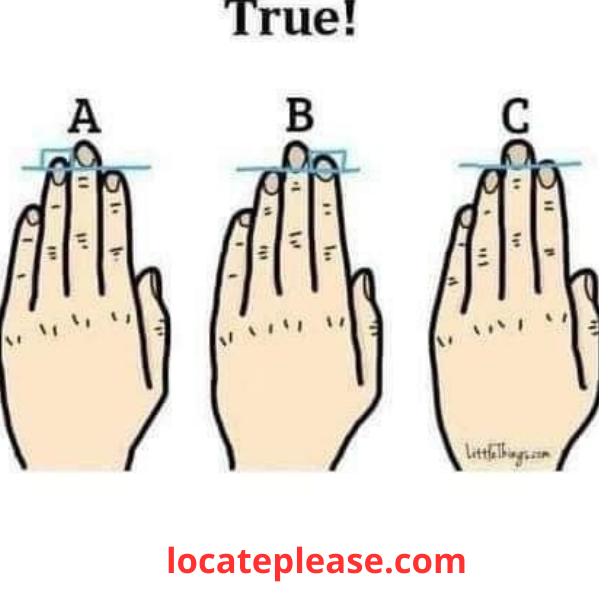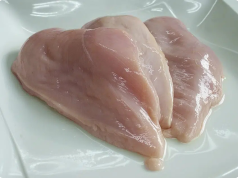At first glance, your hands may seem like just another part of your body — tools for typing, holding, and gesturing.
But what if they held hidden clues about your personality, intelligence, and even your health?
Believe it or not, scientists have been studying the length of your fingers — especially the ratio between your index (pointer) finger and ring (fourth) finger — for decades.
Known as the 2D:4D ratio (second digit to fourth digit), this subtle measurement has been linked to everything from personality traits and athletic ability to hormonal exposure in the womb and even risk for certain diseases.
And the best part?
👉 You can measure it yourself — right now.
Let’s explore what your finger length might be saying about who you really are.
🔬 The Science Behind Finger Length
Your finger lengths are shaped before you’re even born — influenced by prenatal hormone exposure, particularly testosterone and estrogen.
- A longer ring finger (compared to the index finger) suggests higher exposure to testosterone in the womb.
- A longer index finger indicates higher estrogen exposure.
This tiny difference — often just a few millimeters — has been studied in thousands of people across psychology, sports science, medicine, and behavioral research.
While it’s not a crystal ball, the 2D:4D ratio is a biological marker that correlates with surprising traits.
📏 How to Measure Your 2D:4D Ratio
It’s simple:
- Place your right hand flat on a table, palm up.
- Measure (with a ruler or caliper) from the bottom crease of each finger to the tip.
- Index finger (2D) – Pointer finger
- Ring finger (4D) – Fourth finger
- Divide the index finger length by the ring finger length.
👉 Result:
- Ratio < 1.0 = Ring finger longer (higher testosterone exposure)
- Ratio > 1.0 = Index finger longer (higher estrogen exposure)
- Ratio ≈ 1.0 = Fingers are nearly equal
Now, let’s decode what it could mean.
🧠 What Your Finger Length Says About Your Personality & Traits
🔹 1. Longer Ring Finger (Lower 2D:4D Ratio)
More common in men, but found in some women
👉 Personality & Behavior:
- More assertive, confident, and risk-taking
- Higher spatial awareness and mechanical reasoning
- Often more competitive and ambitious
- Tends to excel in athletics and STEM fields
👉 Health & Ability:
- Linked to greater physical strength and endurance
- Higher likelihood of ADHD (in some studies)
- May have better reaction times
🏃♂️ Fun fact: Elite athletes — especially in sports like sprinting and soccer — often have lower 2D:4D ratios.
🔹 2. Longer Index Finger (Higher 2D:4D Ratio)
More common in women, but seen in some men
👉 Personality & Behavior:
- More empathetic, agreeable, and nurturing
- Stronger verbal and social skills
- Tends to be less aggressive, more cooperative
- Often excels in arts, language, and teaching
👉 Health & Ability:
- Lower risk of ADHD and autism (in some studies)
- Higher risk of osteoarthritis
- May be more sensitive to anxiety or depression
🎨 Interesting: Musicians and writers often show higher 2D:4D ratios.
🧬 What Else Finger Length Might Reveal
Beyond personality, your fingers may hint at deeper biological tendencies:
|
Aggression
|
✅ Higher
|
❌ Lower
|
|
Empathy
|
❌ Lower
|
✅ Higher
|
|
Athletic ability
|
✅ Stronger
|
❌ Less pronounced
|
|
Math & science aptitude
|
✅ Higher
|
❌ Lower
|
|
Verbal fluency
|
❌ Lower
|
✅ Higher
|
|
Risk of heart disease
|
⚠️ Slightly lower
|
⚠️ Slightly higher
|
|
Fertility & testosterone levels
|
✅ Higher (men)
|
❌ Lower
|
🚩 Important Notes: It’s Not Destiny
While fascinating, finger length is not a personality test — it’s a tendency, not a guarantee.
Many factors shape who you are:
- Upbringing
- Environment
- Life experiences
- Personal choices
Your 2D:4D ratio is just one small piece of the puzzle — a biological whisper from your time in the womb.
And yes — there’s healthy variation in all humans.
Not everyone fits the “typical” pattern.
🤔 Why Does This Matter?
Understanding these links isn’t about labeling people — it’s about appreciating the deep connection between biology and behavior.
It shows how early development shapes us in ways we’re only beginning to understand.
And for parents, educators, and coaches?
It can help recognize natural strengths and support children in areas where they may thrive.
✋ Final Thoughts: Your Hands Hold More Than You Think
Next time you type, wave, or hold someone’s hand — take a second to look at your fingers.
That tiny difference between your index and ring finger?
It might be a biological signature of your prenatal journey — shaped by hormones, genetics, and chance.
Whether you’re a bold risk-taker or a thoughtful empath, a natural athlete or a creative soul — your hands may have known it all along.
So while you’re not defined by your finger length…
👉 It’s kind of amazing that it could reveal so much about you.
Your hands don’t just shape the world — they tell your story.










